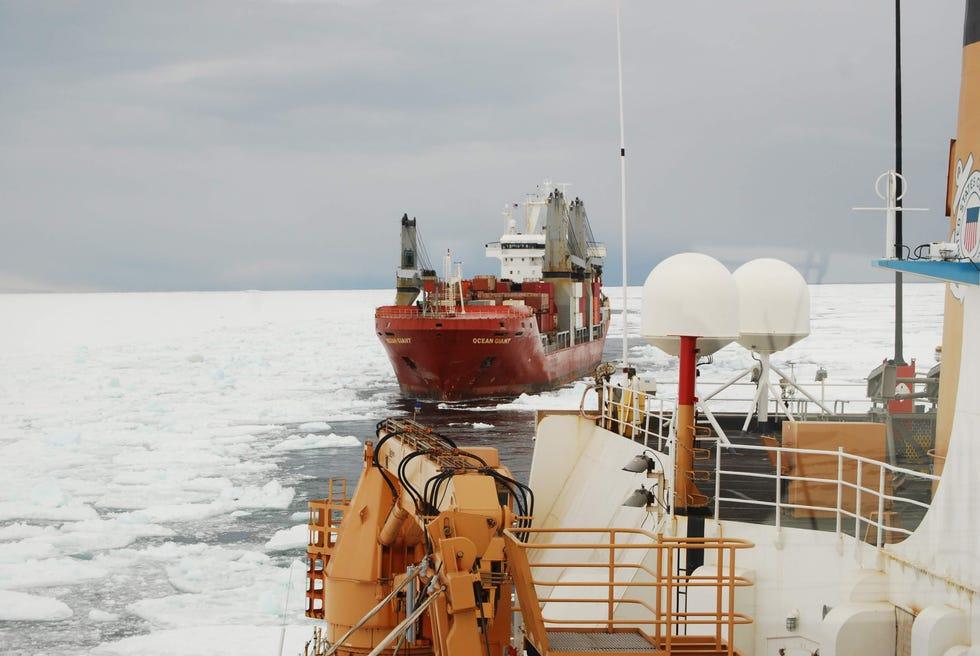This post was originally published on Sustainability Times
Source: Sustainability Times
| IN A NUTSHELL |
|
In recent years, the Arctic region has become a focal point for geopolitical tensions and environmental discussions. As the ice caps melt, new opportunities for resource exploitation and shipping routes are emerging. However, the key to unlocking these opportunities lies in having a robust fleet of icebreakers. While Russia has established dominance with its extensive fleet, the United States finds itself at a critical juncture. The U.S. must decide whether to invest heavily in icebreakers to keep pace with global developments in the Arctic. This article delves into the current state of U.S. icebreaking capabilities, its challenges, and potential strategies for improvement.
Trump’s Ambitious Icebreaker Vision
During his tenure, President Trump made headlines with bold proposals, one of which involved significantly expanding the U.S. icebreaker fleet. In a press briefing, Trump mentioned the idea of acquiring “Forty Coast Guard big icebreakers. Big ones.” This ambitious target was likely influenced by Russia’s formidable fleet of around 40 icebreakers, including seven heavy Polar icebreakers. In stark contrast, the U.S. Coast Guard operates only one heavy Polar icebreaker, the aging 13,000-ton Polar Star, alongside medium-capability icebreakers Healy and Storis.
The motivation behind Trump’s proposal stems from a perceived “icebreaker gap” with Russia. This gap not only represents a military and strategic disadvantage but also limits economic opportunities. The Arctic’s untapped potential for mineral and oil exploitation, alongside new shipping lanes, makes icebreaker capability crucial. The notion of expanding U.S. territory or influence in Arctic regions like Greenland may have also influenced Trump’s icebreaker vision. However, the feasibility of building a fleet this size remains questionable given current challenges.
The Strategic Importance of Icebreakers
Icebreakers are essential for accessing remote Arctic regions, especially during non-summer months when ice coverage is extensive. Without these specialized vessels, ordinary ships are limited in their ability to navigate these icy waters. The U.S. military, particularly the Pentagon, relies on icebreakers to maintain operational readiness in Alaska, home to the Army’s 11th Airborne Division. This region’s strategic importance is underscored by its role in the U.S.’s missile defense against potential nuclear threats.
Beyond defense, the melting Arctic ice presents opportunities for economic gain. As global warming progresses, previously inaccessible areas are opening up for the exploitation of minerals and oil. Efficient cargo transit across the globe is also becoming more feasible, provided there are sufficient icebreakers to clear pathways. These developments highlight the multifaceted importance of icebreakers, from national security to economic prosperity.
Challenges in Expanding the U.S. Icebreaker Fleet
The journey to bolster the U.S. icebreaker fleet is fraught with challenges. The construction of new icebreakers, such as the planned Polar Security Cutters, has faced budget overruns and delays. Initially estimated at $5.1 billion, the program is running 60% over budget, with the lead ship, Polar Sentinel, expected years behind schedule. This situation mirrors the broader crisis in U.S. shipbuilding capacity, where expertise has dwindled over the decades.

Beyond technical challenges, political hurdles also exist. The idea of acquiring icebreakers from international allies like Canada or South Korea, who possess the necessary shipbuilding expertise, could expedite fleet expansion. However, the political climate and policies advocating for “Made in the U.S.A.” products make such proposals difficult to advance. Trump’s administration, for instance, has shown reluctance towards foreign-built ships, along with proposing tariffs on Canadian imports, complicating potential collaborations.
“Unprecedented Military Upgrade”: Senators Reveal Massive Boost for Trump’s Iron Dome
Opportunities for Collaboration and Innovation
Despite these challenges, there are avenues the U.S. can explore to enhance its icebreaking capabilities. Collaborating with NATO allies, including Canada, which is acquiring 16 icebreaking Multi-Purpose Vessels, presents a viable option. These vessels, built in Vancouver, Canada, could complement U.S. efforts in the Arctic. Furthermore, leveraging the collective icebreaking resources of NATO allies can offer strategic advantages in times of global conflict.
The U.S. could also consider partnerships that involve technology exchanges and collaborative shipbuilding projects. Such initiatives can revitalize domestic shipbuilding expertise while reducing dependency on foreign-built vessels. While political and economic considerations pose significant obstacles, the potential benefits of a robust icebreaker fleet underscore the need for creative solutions and international cooperation.
As the Arctic continues to thaw, the stakes for securing access to its resources and strategic routes grow ever higher. The U.S. faces both challenges and opportunities in its quest to enhance its icebreaker fleet. With geopolitical rivals like Russia advancing their Arctic capabilities, the question remains: Will the United States rise to the occasion and seize the Arctic’s potential, or will it continue to lag in the race for the North?
The post “Russia dominates the Arctic before the US”: these unstoppable icebreakers give Moscow overwhelming control over the world’s most strategic frozen frontier appeared first on Sustainability Times.


 The United States is under pressure to expand its icebreaker fleet to compete with Russia’s extensive capabilities.
The United States is under pressure to expand its icebreaker fleet to compete with Russia’s extensive capabilities. Icebreakers are crucial for accessing new Arctic shipping lanes and exploiting untapped resources as global warming progresses.
Icebreakers are crucial for accessing new Arctic shipping lanes and exploiting untapped resources as global warming progresses. Building new icebreakers faces significant budget overruns and delays, highlighting challenges in U.S. shipbuilding capacity.
Building new icebreakers faces significant budget overruns and delays, highlighting challenges in U.S. shipbuilding capacity. Collaborations with international allies could accelerate fleet expansion, but political hurdles remain a significant barrier.
Collaborations with international allies could accelerate fleet expansion, but political hurdles remain a significant barrier.


0 Comments